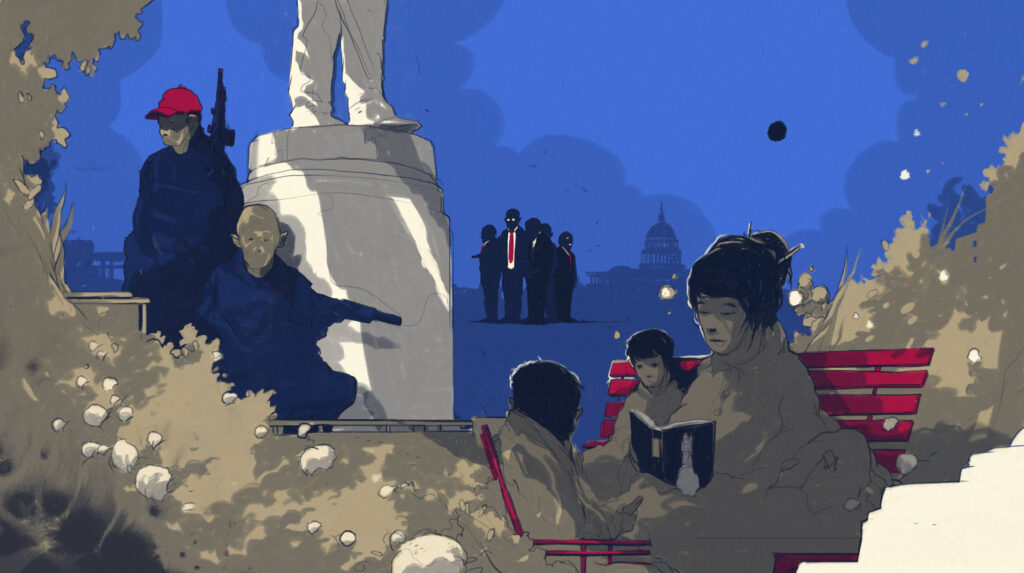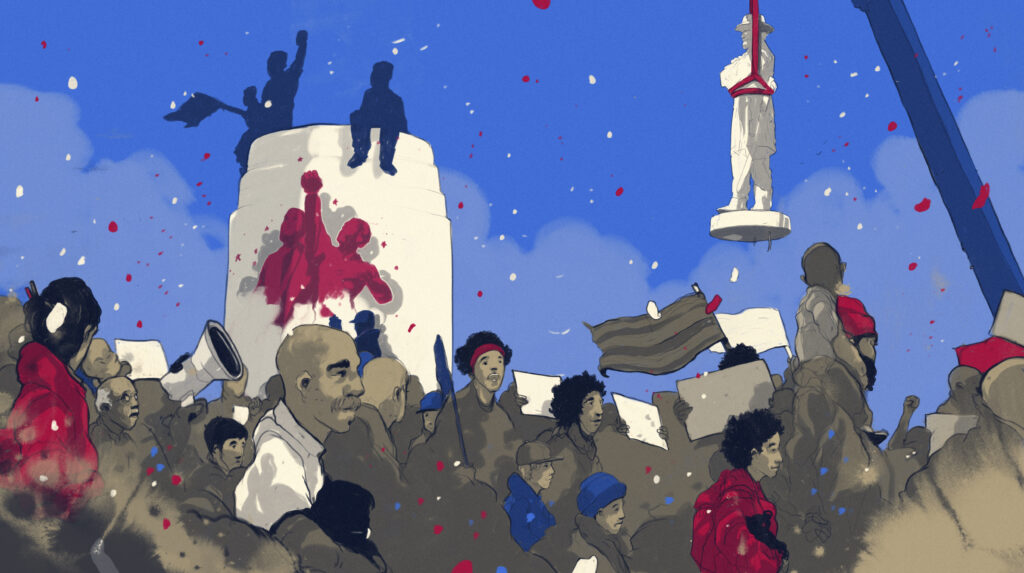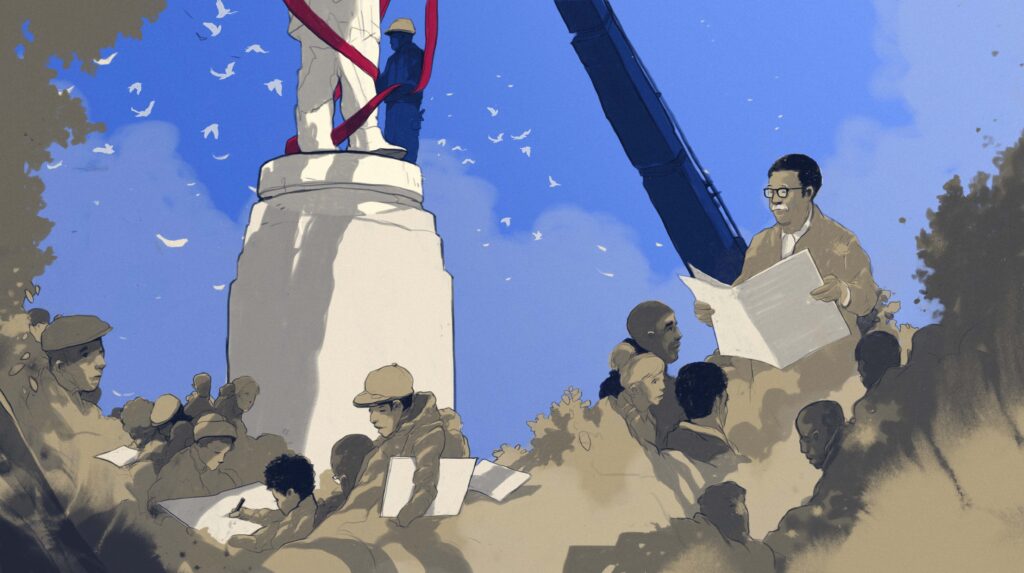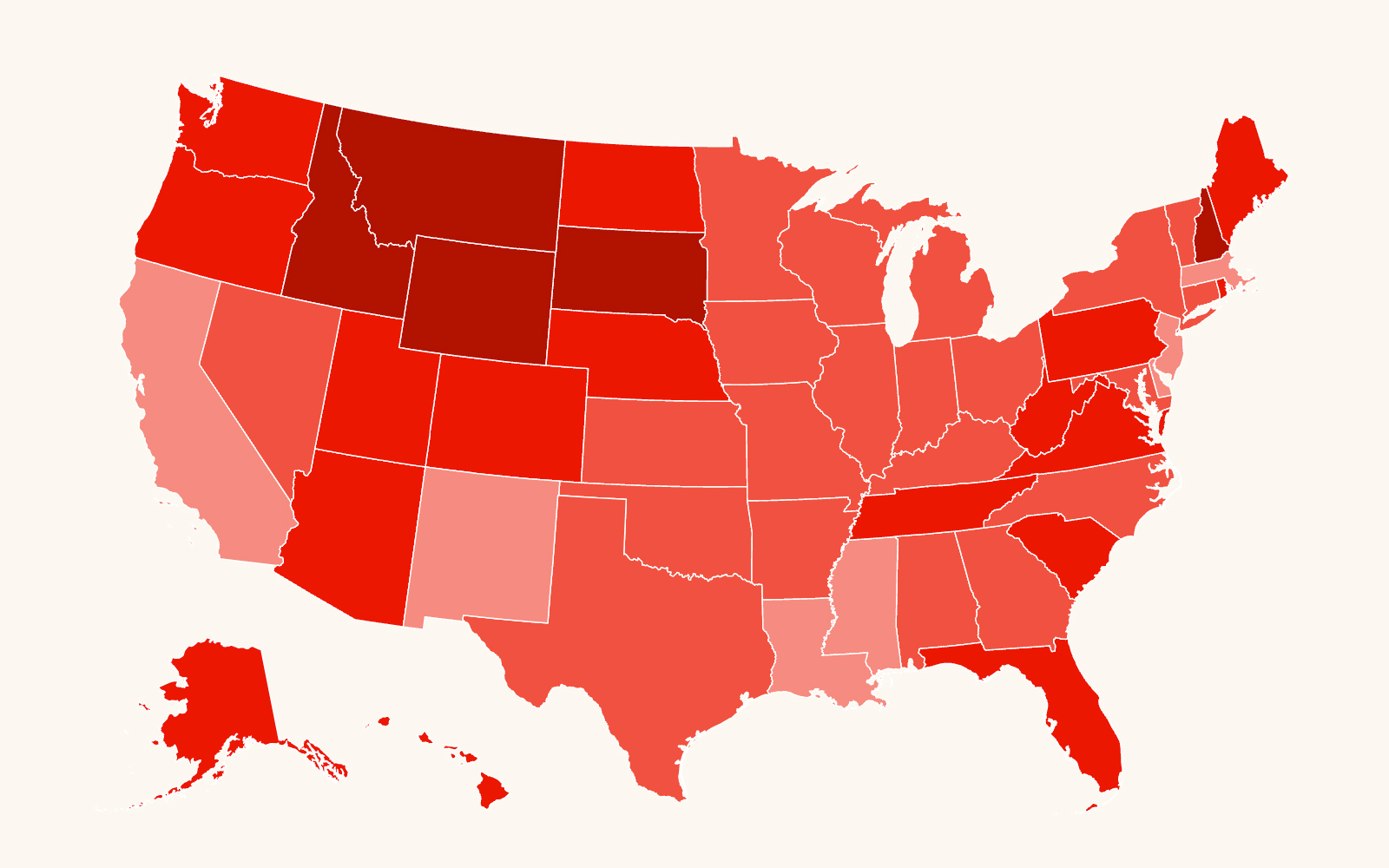There Is Still Room for Truth
Depending on your location, you may find that where statues once stood honoring white supremacist Confederate leaders, there are now plaques explaining the truthful, painful history of Black enslavement and subjugation. Or you may still be forced to bear witness to the carved stone faces of, or buildings named for, Confederates imposing the Lost Cause myth on your community.
Despite the successful efforts of many civil rights advocates, symbols and narratives of the Lost Cause still exist across the United States, especially in the Deep South. These symbols and narratives arose from a propaganda campaign that pushed the myth of the Lost Cause decades after the Civil War. Regressive politicians perpetuate falsehoods glorifying a disgraceful past. As hundreds of Confederate symbols have been relocated, renamed or removed, some hold onto the myth, as President Donald Trump did when he claimed, “Sad to see the history and culture of our great country being ripped apart with the removal of our beautiful statues and monuments … the beauty that is being taken out of our cities, towns and parks will be greatly missed and never able to be comparably replaced!”
While the conflict will no doubt continue over “Whose Heritage” is expressed in our symbols, the conflict is bigger than just symbols; it is a struggle over the narrative of our history and our future.
Narratives are our collective story. Symbols add depth to narratives. And ideology or beliefs provide the framework that shapes the story. But even a dominant narrative leaves room for competing stories and truth.
While the conflict will no doubt continue over ‘Whose Heritage’ is expressed in our symbols, the conflict is bigger than just symbols; it is a struggle over the narrative of our history and our future.
The dominant myth of the Lost Cause is based in white supremacy and is expressed through Confederate symbols. This narrative imposes continued structural discrimination through policies and practices affecting the everyday lives of Black people.
However, a truthful narrative about slavery and the Confederacy is based on a belief in the value of inclusive democracy. It is a narrative full of symbols of hope and resilience.
This fourth installment of the Southern Poverty Law Center’s Whose Heritage? report offers an evolving assessment of the threats and harms that find continued life through Confederate symbols, Lost Cause narratives and ideologies of white supremacy. The report also provides guidance on how communities can build toward more democratic structures and create new narratives that center on truth-telling. This installment:
- Outlines how exposing the white supremacy behind Lost Cause myths can help resist attempts to reinstate Confederate symbols — like the renaming of U.S. military bases.
- Uplifts stories of communities’ building new symbols of the truthful U.S. history, making space for new stories and inspiring new and continued community efforts.
- Underscores how attacks on public education and anti-student inclusion efforts are regressive and harmful.
- Shares a road map for organizing campaigns to communicate the truth about Confederate symbols through an updated Whose Heritage? community action guide.
The SPLC maintains a commitment to relegate white supremacy out of the mainstream, reduce its impact on democracy and prevent violent harms that are inflicted on Black and Brown people. The Whose Heritage? report is designed to expose the scope of symbols perpetuating the Lost Cause myth, and to elevate the efforts to replace symbols and harmful narratives and inspire action.
Sincerely,
Rachel Carroll Rivas
Interim Director, Intelligence Project
Southern Poverty Law Center
Illustration by Simón Prades

Part II: The Contemporary Landscape

Part III: New Forms of Public Memory





